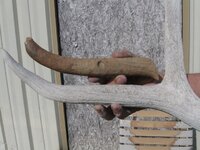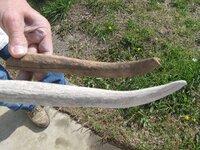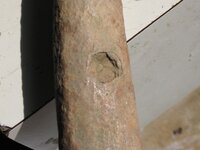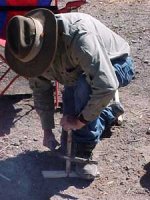naturegirl
Bronze Member
- Mar 21, 2009
- 2,356
- 403
This isn't metal, but Buckshot found it and we have a "what is it" question. I know there are a lot of hunters on this forum, so here goes. we think it's part of an elk antler, maybe whitetail, not sure if that can be determined or not. What caused the little hole? Of course we are hoping a musket ball, or something like that, and maybe some of you hunters have seen this kind of damage on an antler.  Pure conjecture on our part, but it never hurts to ask.
Pure conjecture on our part, but it never hurts to ask.
Thanks for looking!
 Pure conjecture on our part, but it never hurts to ask.
Pure conjecture on our part, but it never hurts to ask.Thanks for looking!






 Hope it's damage, 'cause that would be an amazing find, almost like finding the old bullet itself.
Hope it's damage, 'cause that would be an amazing find, almost like finding the old bullet itself.



